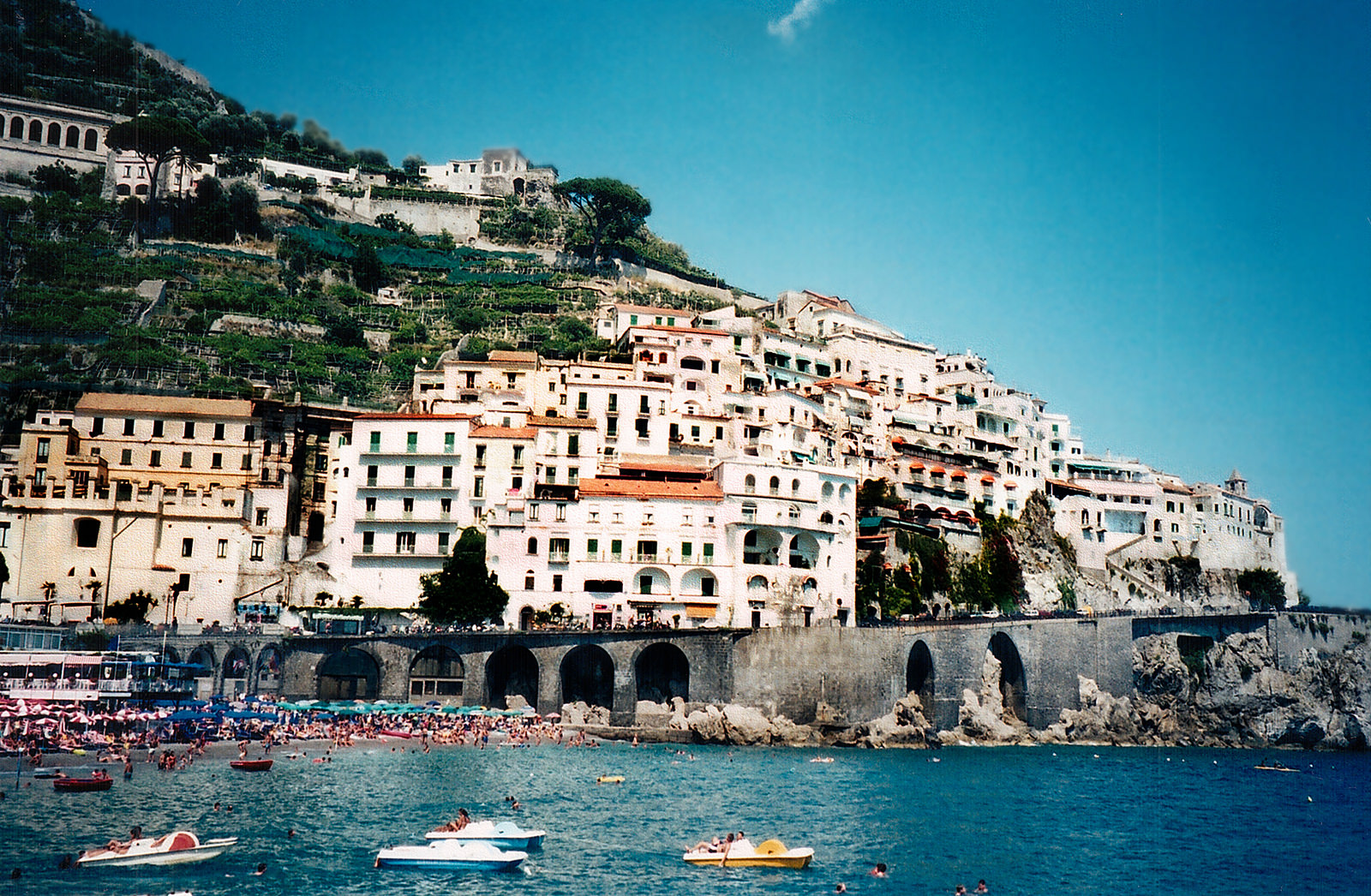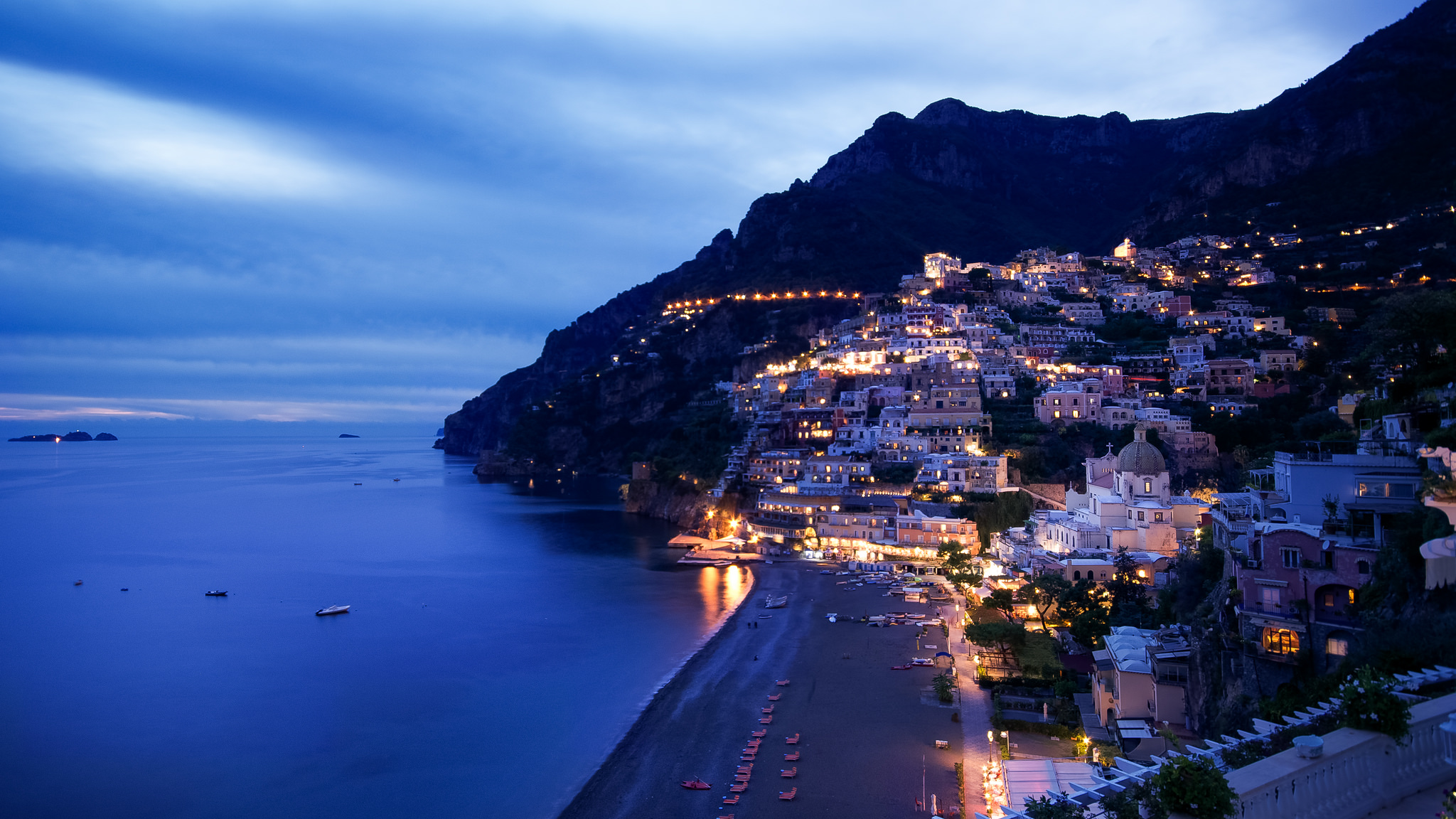From Ravello To Pompeii: Walking Italy For Beginners


Brought to you by Contiki
This article is sponsored by Contiki.
–
There’s no way to see a place more authentically than by walking it. To actually be touching the ground, not separated by car or untethered completely by flight, turns travel into something completely other. As Australians the idea of walking as means to move between cities is unfathomable, but Europe – with its thousands of years of civilisation building town upon town – is rife with walking trails and among some of the best in the world.
This summer in Italy I walked the trail between Ravello and Pompeii and, okay, it wasn’t the blistering hike-mare of Reese Witherspoon’s Wild – it was still a life changing week. Mostly because of the cheese. There was plenty of life changing cheese.
This trip was between one to three walking hours a day, that includes a climb 400 metres above sea level via hundreds of years old stone stairs to begin. My walk took seven days as I spent a good day in each place along the way but if you wanted to you could just use the towns as sleep stops and get it all done in a comfortable three.

The picturesque Amalfi. (Photo: Flickr/Blok 70)
–
Ravello to Amalfi
Walk time: One hour
Ravello is one of those ridiculously good-looking European villages that just makes you want to grab a local and shake them, “Do you know you’re living in a postcard? How is this place real?”
Perched 350 metres above the port of Amalfi with incredible views of the Gulf of Salerno. This is where I started my ‘trek’ (cheese fuelled waddle). This region has an arterial network of ancient trails that wind all around the peninsular. These began life as donkey tracks, which originally linked the villages of the peninsular.
There are a few steep hills along the way but nothing too serious, and every five minutes is another breathtaking view, church, field of flowers or family-run tavernetta to distract yourself with, so it’s constantly interesting even for the likes of me – whose attention span went to seed the second the internet happened.
The walks are sporadically inlaid with marker tiles and wooden signposts, and Ravello to Amalfi is just over an hour’s walk, so is an excellent slide into the trip. I spent two nights in Amalfi because it’s so beautiful (and because I am very, very lazy) but you head straight through if you choose.
Literally built into the face of a frigging cliff; you could definitely suggest the people from Amalfi (Amalfalas? adorable) are quite dedicated to their slice of the world. The small town is full of sun filled piazzas, colourful town houses and tanned Europeans – all built on the lip of the ocean, dusted by a single (but popular) beach. You can walk from one end of it to the other in about 20 minutes, but that doesn’t mean you should.
–
Amalfi to Conca dei Marini
Walk time: Two hours
Conca dei Marini is another cliff-cut town, complete with shell beaches and whitewashed villas. It’s famous in Italy for three things:
1. The Grotta dello Smeraldo (emerald grotto), a totally magical cave that fills up for swimming at half and full tide and is bathed in a brilliant emerald light due to refracting sunlight;
2. The teeny tiny monazzeni (fisherman’s huts) clustered in the rocks; and
3. Santa Rosa sfogliatella – a local pastry filled with custard and sugar and the dreams of sleeping angels (or something, they’re amazing).
There are a few reasonably priced B&Bs for you to bunk in, and you’re likely to get ocean views because the whole town is an ocean view.

Did we mention the life-changing cheese?
–
Conca dei Marini to Positano
Walk time: Three-and-a-half hours
Okay, this guy is more of a walk. The paths (known locally as ‘Sentiero degli Dei’ – God’s footpath) will take you through Praiano – but by now you’re probably used to the obscene beauty of perfect pastel towns hewn from coastal rock faces and will just blow right through (after a seafood lunch, too much wine, and a good lay down on Praia beach, probably) and on to Positano.
Like Hydra in Greece, Positano got a name for itself in the ’70s as a glamour spot of rich and famous bohemians. Regulars include celebrities from Mick Jagger to Tom Cruise and its beauty has been waxed lyrical by writers and poets like John Steinbeck and Leonard Cohen.
Rent a paddleboard or small boat so you can get a proper look at the place by the sea or get a sandwich from the beachside wine and panini shop imaginatively named Vini & Panini, and go cool your feet.
–
Positano to Sorrento
Walk time: Four hours
While you’re still ostensibly on the coastline, this portion feels a little more like the hills of provincial Italy. You will see meadows, you will see cows, you will see cows in meadows. You’ll pass through the tiny town of Colli di Fontanelle where roughly 1000 people live permanently. Catch some sun in the main square Piazza Carlo Sagristan and munch on a traditional Italian meal that will stick to your ribs at Ristorante La Rosa before heading on to Sorrento.
And now you’re in heaven. I mean Sorrento. This veranda over the sea, with views that reach all the way to Mt Vesuvius.
The thriving heart of the city is the Piazza Tasso, which is full of beautiful people at all hours of the day and night. The artery of Corso Italia is lined with restaurants and shops but really, the whole city is swimming with eateries and boutiques tucked away in side streets and alleyways.
Lay in the Villa Comunale, a leafy park spilling over with green trees and flowers. Then there’s the Piazza Vittoria with its Temple of Venus, or the church of San Francesco that hosts concerts and art exhibitions.
I know, I know – the unfettered beauty, rich foods, sun-drenched beauty and friendly people you came across on the trail made it seem at times like maybe you would never get there, but you guys, you did.

Positano by night. (Photo: Flickr/Raphaël Chekroun)
–
Bonus: Sorrento to Pompeii
Walk time: Five hours/an eternity
And this, good reader, is where I got Wild. Remember those beautifully marked, lovingly maintained pathways I mentioned earlier? The footpaths to the gods? Well this is where I said ‘Who needs them?!” To be fair, and accurate, there were no more; Sorrento is where all sane people decide to stop when the path stops.
You can walk from Sorrento from Pompeii – you can. I did it. It’s five hours walk that is mostly along the highway. It’s easy enough to figure out because there are plenty of signs. Travel is about getting outside your comfort zone, travel is accomplishment. This part of my trip was definitely both of those things.
–
Practical Stuff
What I packed: I had a small 40 litre walking pack, and travelled light. I was careful to always leave each town with a full water bottle and, as a child of the 90s, I was very careful to slip slop and slap.
When to go: On the Amalfi coast high season begins at the end of April and runs through till September. Prices are higher, hotels are tougher to book, and the streets will be crowded with tourists so I suggest going early April or October – the weather will still be lovely but you’ll have more room to breathe.
Maps: A new walking map for this area was published in 2013 and is available from all tourist offices in the Salerno province and is very good – they even tell you what the sign posts mean, which is super handy.
(Lead image: Flickr/Cristiano Medeiros Dalbem)
–
Europe trips for 2017 are on SALE NOW with Contiki. Over 21 new and improved itineraries – what more could you want really? Book now and save 10%. View Euro deals here.